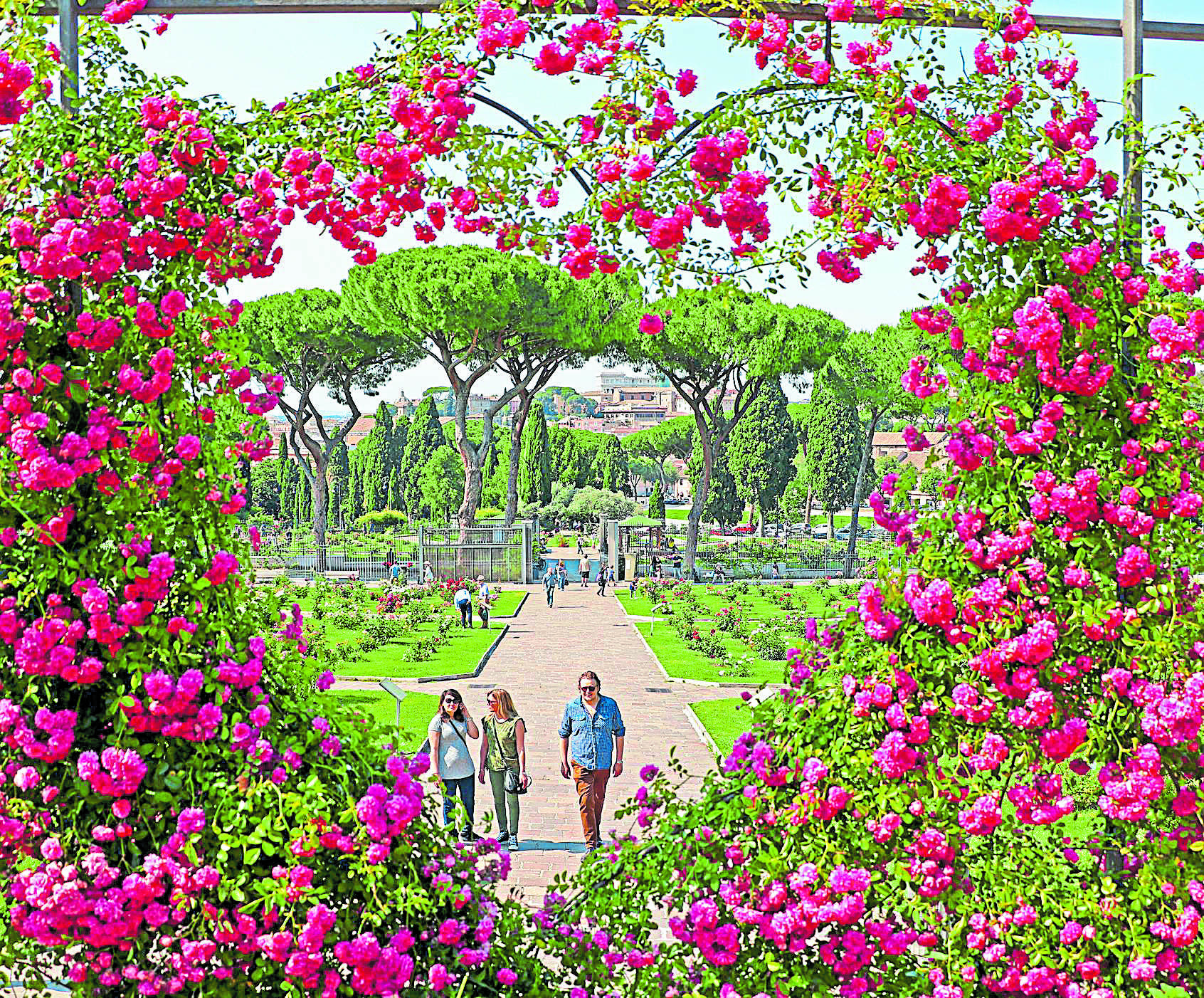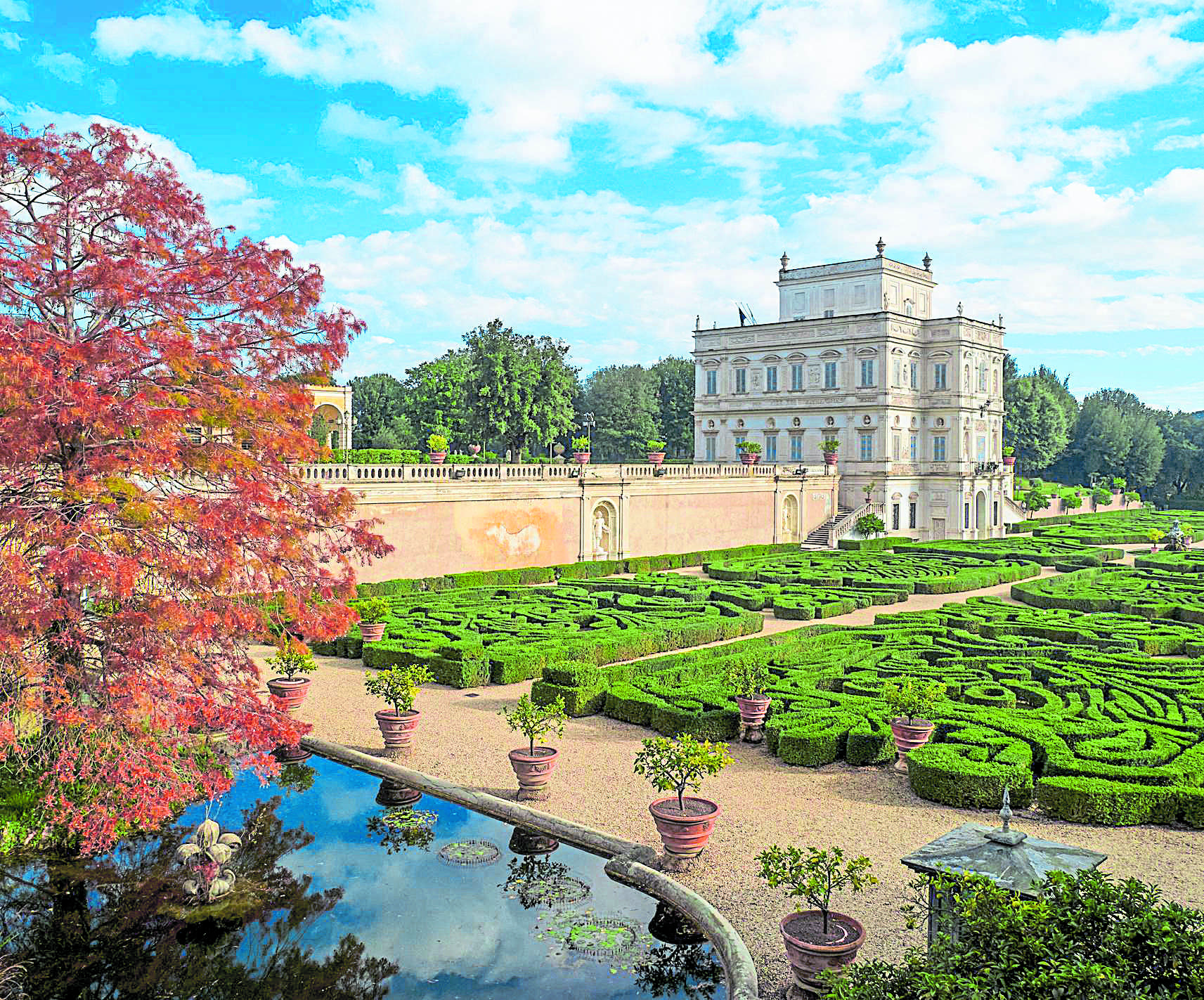Secrets of Rome: unique views and gardens steeped in history

It's known as the city of open-air ruins, but perhaps the past isn't the only outdoor attraction Rome has to offer. The Italian capital has parks and viewpoints that no traveler should miss, ideal for enjoying the skyline and giving it the three-dimensionality that any visit to the imperial city deserves.
According to founding legends, Rome was built on seven hills. The Janiculum is not one of them, but it does have a must-see belvedere . Located west of the Tiber, between Trastevere and the Vatican, and very close to the old Jewish quarter, this open-air promenade is ideal for enjoying the sunset. Popular and relaxed, it offers picnic areas and snacks and sandwiches from street vendors.
The area, the scene of the heroic deeds of the fighters for the Roman Republic in 1849, was transformed into a public promenade dedicated to the memory of the Defense of Rome . The equestrian statue of Giuseppe Garibaldi, a key figure in this reunification process, is particularly noteworthy. Along the avenues are busts of the illustrious Garibaldi fighters who fought for the defense of Rome.
One of the Janicolo della Giulia's biggest attractions is the Fontana dell'Acqua Paola , commissioned by Pope Paul V to supply water to the Trastevere, Vatican City, and Via Giulia areas. It was designed by architects Giovanni Fontana and Flaminio Ponzio between 1605 and 1621. Divided into five marble niches, it collected water from five streams and served as inspiration for the later Trevi Fountain. Accessible on foot, it offers a stunning panoramic terrace overlooking the small curve of the hill where it stands. Warning: watch out for the carts, which never stop, as the narrow, winding street is not a pedestrian zone.
The Aventine Hill, they say, is the best hill from which to view Rome. What many don't know is its tiny secret. At any time of day, Romans and tourists alike line up to look out from the Orange Garden at the entrance to the Magistrates' Villa, the institutional headquarters of the Sovereign Order of Malta. From lock three in the Piazza dei Cavalieri di Malta, you can enjoy one of the most fascinating—and unexpected—views of St. Peter's Basilica.
Framed by a natural laurel hedge, the dome designed by Michelangelo gives the illusion, through the keyhole, of being larger and therefore closer. The "telescope" effect means that if you walk from the door toward the dome, St. Peter's appears further away rather than closer. Decorated with war trophies alluding to the exploits and history of the Knights of Malta, the small 18th-century square that serves as the antechamber to the Villa is the only architectural work—along with the church of Santa Maria in Aventino—by Giovanni Battista Piranesi and dates from 1765. It is an almost unique example of a Rococo urban setting in Rome.
Very close by is the Roman Rose Garden, with more than a thousand species from around the world. Admission is free and it is located on the site of an ancient Jewish cemetery, which is why the Torah tablets were placed at the entrance, and the paths dividing the rose collections form the menorah (the seven-branched candelabrum).

Rome's Rose Garden in spring. Photo: iStock
To crown the sunset and delight your sight and smell simultaneously, the Orange Garden is recommended. This terrace overlooking the city with centuries-old trees and orange blossoms offers another of Rome's most beautiful views. Surrounded by pine trees, it is considered one of Rome's most romantic spots. The name derives from the trees there, although the official name of the site is Parco Savello. With the urban restructuring of the Aventine Hill in the 1930s, the Orange Garden emerged as we know it today and was opened to the public.
Villa Pamphili To round off your visit to Trastevere, one of Rome's iconic neighborhoods, it's ideal to explore Pamphili, a sprawling villa that offers a rich combination of gardens, natural landscapes , and historic architecture.
The center of the town is the Casino del Bel Respiro, also known as the Pamphili Palace, a masterpiece of Baroque architecture designed by Alessandro Algardi and Giovanni Francesco Grimaldi. This palace is famous for its elegant façade, opulent interiors, and impressive art collection.

The park of Villa Doria Pamphili. Today, it is the largest landscaped public garden in Rome. Photo: iStock
Outside is the Secret Garden, a true gem of landscape architecture: sculpted hedges in the shapes of doves and lilies, the heraldic symbols of the Pamphili, along with evergreen and exotic plants and a variety of flowers that enhance its beauty.
The Villa's gardens are an excellent example of the Italian garden style, with tree-lined avenues, ornamental fountains, and classical statues. The park extends over 180 hectares. Here, visitors can enjoy leisurely strolls, picnics, sports, or relax in a serene, natural setting. The numerous paths and trails make it ideal for cycling.
The Roman Central Park Located on the Pinicio Hill , this park was the estate and vineyard of the wealthy Borghese family. Construction of the Villa Borghese Pinciana was completed in 1633 and included other buildings, such as an aviary and a greenhouse. In the 19th century, the park underwent major renovations and was rebuilt in the English style, with several ponds and fountains.
In 1903, it was acquired by the Rome City Council and converted into a public park. Today, Rome's largest green space is the perfect place to escape the city's hectic pace by getting lost among its ancient groves.
This Roman space has everything and nothing to envy New York's Central Park. On one side of it is the Borghese Gallery, which, in addition to being an imposing building , houses works by Caravaggio, Raphael, Titian, Correggio, and Bernini, among others. "The Delight," as it is known, charges an entrance fee of 13 euros. In addition, there is a zoo within the park, known as Bioparco.
For an outdoor theater experience, the Silvano Toti Globe Theatre is an unparalleled choice. This theater is a replica of London's famous Shakespeare's Globe Theatre , allowing visitors to immerse themselves in an authentic Elizabethan experience.
Another must-see is the Pincio Water Clock , a 19th-century piece of engineering that still works. This hydraulic clock uses water power to keep time and is a popular attraction for its ingenious mechanics and classic aesthetic.
eltiempo





